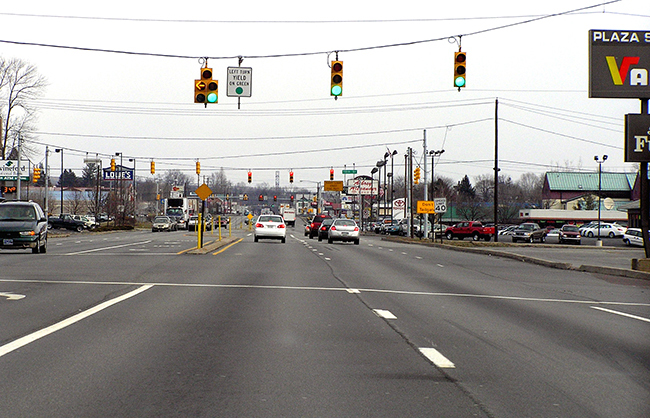Phasing
The traffic signal and its phasing operation must balance the safety and capacity of the intersection.
When the number of phases required at an intersection is determined, the goals of safety and capacity may conflict. For example, protected left-turn phases (i.e., left-turning traffic has the right-of-way) are generally safer than having unprotected (permissive) left turns (i.e., left-turn yield on green) cross against opposing traffic. However, the added phases may result in longer cycle lengths and increased vehicle delays.

Additional phases are usually added to accommodate left turns. In general, as left-turn volumes and opposing through-traffic volumes increase, a point is reached where it is difficult for left-turning traffic to find adequate gaps in opposing traffic to safely make a left-turn. Providing a separate left-turn lane will alleviate the problem somewhat by providing storage space where turning vehicles can wait for a gap without blocking through traffic. However, a left-turn signal phase may still be necessary.


